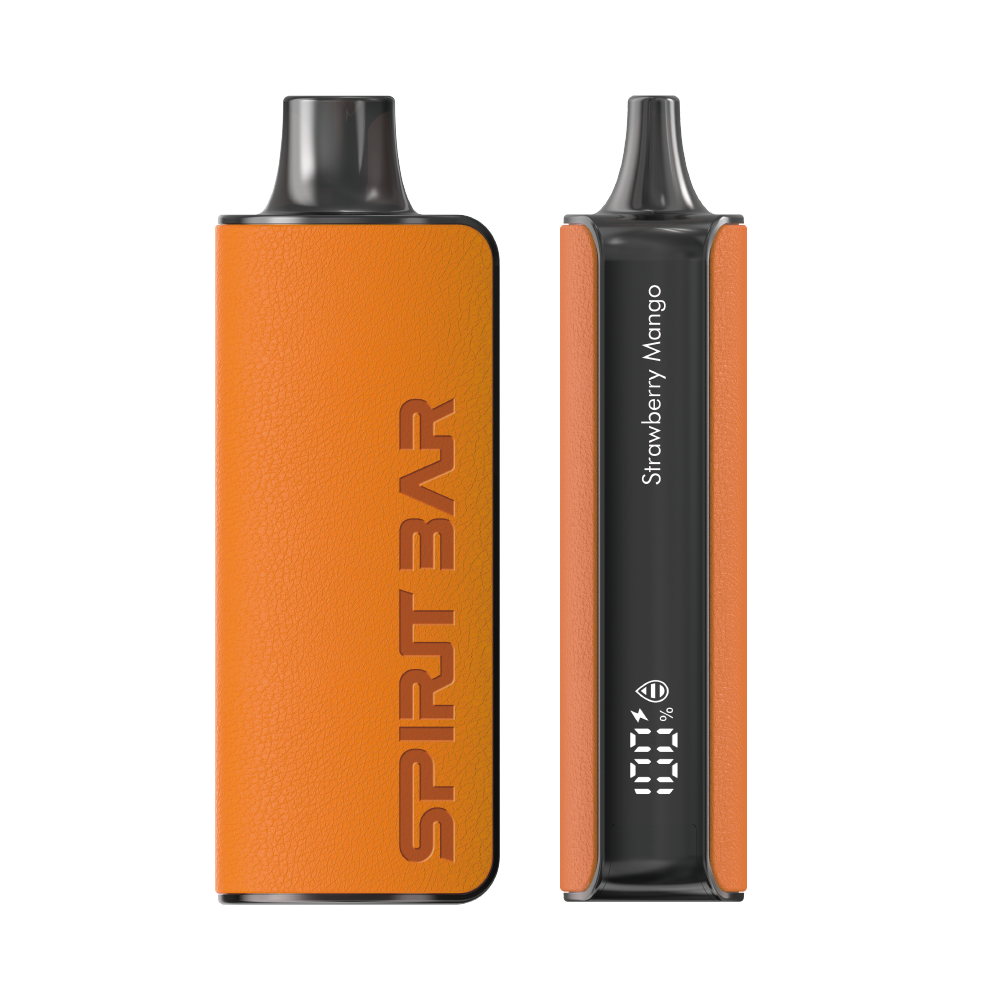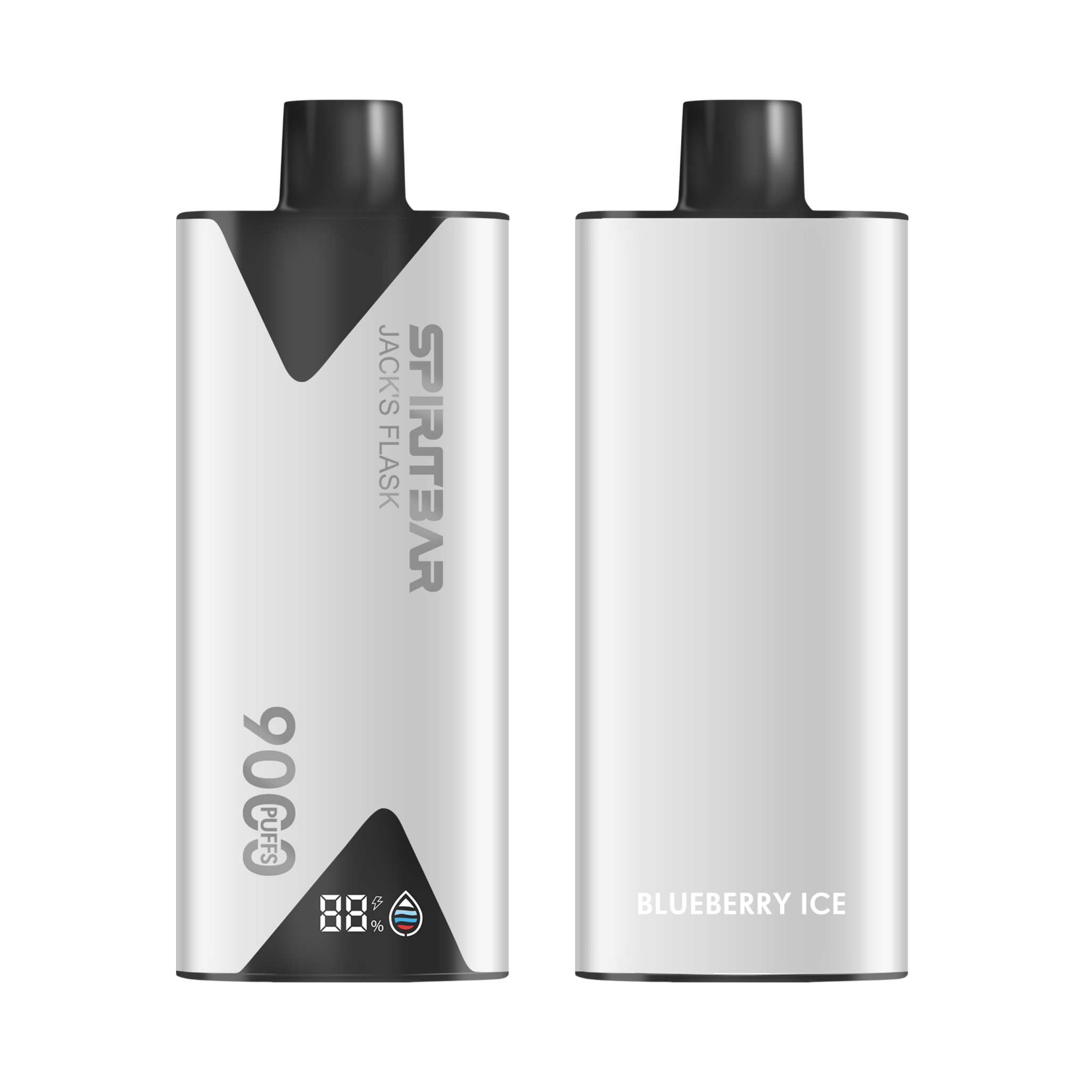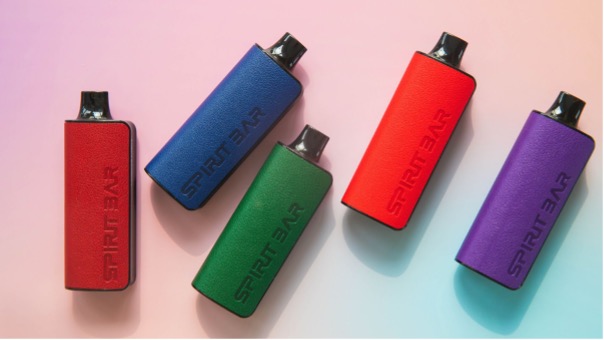Vaping 101: How the Heck Does an Atomizer Work?
So, you’re curious about how the atomizer in a vape works. Well, you’ve come to the right place! The atomizer is a crucial component of any vape device, responsible for heating up the e-liquid or other vape material and turning it into the delicious vapor you inhale. But how does it do this?
First, let’s break down the basic setup of an atomizer. When you power on your vape device, the battery supplies power to the atomizer. The atomizer then heats up the coil(s) using this power. As the coils reach a precise temperature, they heat up the e-liquid or other vape material that is contained in the atomizer. The resulting vapor is then inhaled through the mouthpiece. Sounds simple enough, right? But there’s more to it than just that.
Different types of atomizers work in slightly different ways, and there are a variety of factors that can affect how well an atomizer performs. From the type of coil used to the material of the wick, there are many variables that can impact the quality of the vapor produced. But don’t worry, we’ll cover all of that and more in this article. So sit back, relax, and get ready to learn everything you ever wanted to know about how the atomizer in a vape works!
The Atomizer: The Heart of the Vape
https://www.youtube.com/watch?v=YIE9KjzTiB0&embed=true
So, you want to know how the atomizer in a vape works? Well, my friend, you’ve come to the right place. The atomizer is the heart of your vape, and it’s what turns your e-liquid into inhalable vapor. Without it, you’d just be sucking on a fancy-looking straw.
The atomizer consists of two primary pieces: the cartridge or atomizer tank, and the heating element or coil. The cartridge or atomizer tank is where your e-liquid is stored, and the heating element or coil is what vaporizes the liquid. When you press the button on your vape, it sends power from the battery to the coil, which heats up and turns the e-liquid into vapor.
But how does the coil actually vaporize the e-liquid? It’s all about heat transfer. The coil is made of a material that has a high resistance to electrical current, like kanthal or nichrome. When electricity flows through the coil, it encounters resistance, which causes the coil to heat up. This heat is then transferred to the e-liquid, which is absorbed by the wick and turned into vapor.
Now, you might be wondering why the atomizer needs a wick. Well, the wick is what absorbs the e-liquid and delivers it to the coil. Without a wick, the e-liquid would just sit in the tank and never make it to the heating element. Most atomizers use a cotton wick, but some use other materials like silica or ceramic.
So, there you have it. The atomizer is the heart of your vape, and it works by heating up a coil that vaporizes your e-liquid. The wick absorbs the liquid and delivers it to the coil, where it’s turned into vapor. It’s a simple process, but it’s what makes vaping possible. Now go forth and impress your friends with your newfound knowledge of vape technology.
Resistance is Futile: Understanding Ohm’s Law
https://www.youtube.com/watch?v=mvGyhmA_H-k&embed=true
So, you’re wondering how the atomizer in your vape works? Well, before we can dive into that, we need to talk about Ohm’s Law. Don’t worry, it’s not as complicated as it sounds.
Basically, Ohm’s Law states that the current through a conductor between two points is directly proportional to the voltage across the two points, and inversely proportional to the resistance between them. Got it? No? Okay, let’s break it down.
Current, measured in amps, is the flow of electrical charge through a circuit. Voltage, measured in volts, is the force that pushes the electrical charge through the circuit. Resistance, measured in ohms, is the opposition to the flow of electrical charge through the circuit.
This disposable vape captures the daring spirit of the high seas with its flask styling and signature pirate e-juice flavors. The extraordinary battery life provides 9000 indulgent puffs for extended vaping pleasure. Live boldly and freely with the Jack's Flask - a legendary vaping experience fit for a pirate's adventures.
So, how does this relate to your vape? Well, the atomizer in your vape is essentially a heating coil that heats up a liquid (usually e-juice) to produce vapor. The resistance of the coil affects the amount of current that flows through it, which in turn affects the amount of heat that is produced.
Lower resistance coils (measured in ohms) allow more current to flow through them, producing more heat and vapor. Higher resistance coils allow less current to flow through them, producing less heat and vapor.
It’s important to note that the resistance of your coil needs to match the capabilities of your battery. If your coil has too low of a resistance, it can overload your battery and potentially cause it to explode. Yikes! So, always make sure to check the specifications of your battery and coil before using them together.
In summary, Ohm’s Law is essential to understanding how the atomizer in your vape works. The resistance of your coil affects the amount of current that flows through it, which in turn affects the amount of heat and vapor produced. So, choose your coils wisely and always make sure to check the specifications of your battery.
Coil Types: The Flavor Makers
So, you’ve got your vape set up, and you’re ready to start enjoying some delicious vapor. But wait, what’s that little component inside your atomizer that’s responsible for creating all that tasty vapor? That’s right, it’s the coil!
There are a few different types of coils out there, each with its own unique set of characteristics. Let’s take a look at some of the most popular coil types and how they affect the flavor of your vapor.
Kanthal Coils
Kanthal coils are the most common type of coil you’ll find in a vape. They’re made from a combination of iron, chromium, and aluminum, and they’re great for producing a consistent, reliable flavor. Kanthal coils are also very durable, so they’ll last you a long time.
Stainless Steel Coils
Stainless steel coils are another popular option. They’re made from, you guessed it, stainless steel, and they’re known for producing a clean, crisp flavor. Stainless steel coils also heat up quickly, so you won’t have to wait long before you can start vaping.
Nickel Coils
Nickel coils are a bit more controversial. Some vapers swear by them, while others avoid them altogether. Nickel coils are known for producing a very pure flavor, but they can also be a bit finicky. They’re very sensitive to temperature changes, so you’ll need to be careful when using them.
Ceramic Coils
Ceramic coils are a newer option, but they’re quickly gaining popularity. They’re made from a ceramic material that’s known for producing a very clean, pure flavor. Ceramic coils are also very durable, so they’ll last you a long time.
Mesh Coils
Mesh coils are another newer option. They’re made from a mesh material that’s known for producing a very smooth, consistent flavor. Mesh coils also heat up quickly, so you won’t have to wait long before you can start vaping.
So, there you have it, a quick rundown of some of the most popular coil types out there. Whether you’re looking for a consistent, reliable flavor or a pure, clean taste, there’s a coil out there that’s perfect for you.
Wick Material: Cotton, Silica, or Ceramic?
So, you’re curious about the wick material in your vape atomizer? You’ve come to the right place! Let’s dive into the pros and cons of the three most common wick materials: cotton, silica, and ceramic.
Cotton
Cotton is the most popular wick material for vapers. It’s affordable, easy to find, and provides a clean taste. Cotton wicks are known for their quick wicking ability, which means they can absorb e-liquid faster than other wick materials. This can be a plus for those who love to chain vape.
However, cotton wicks have a few downsides. They can burn easily if they run dry, which can lead to a burnt taste. Additionally, cotton wicks can break down over time, which means you’ll need to replace them more frequently.
Silica
Silica wicks are another popular option. They’re known for their durability and ability to withstand high temperatures. Silica wicks also have a neutral taste, which means they won’t affect the flavor of your e-liquid.
However, silica wicks can be a bit trickier to work with than cotton wicks. They require a bit more prep work before use, and they don’t wick as quickly as cotton wicks. Additionally, some vapers have reported a “silica taste” when using silica wicks.
Ceramic
This disposable vape captures the daring spirit of the high seas with its flask styling and signature pirate e-juice flavors. The extraordinary battery life provides 9000 indulgent puffs for extended vaping pleasure. Live boldly and freely with the Jack's Flask - a legendary vaping experience fit for a pirate's adventures.
Ceramic wicks are a newer option on the market. They’re known for their longevity and ability to withstand high temperatures. Ceramic wicks also provide a clean taste and are less likely to burn than cotton or silica wicks.
However, ceramic wicks can be a bit more expensive than other wick materials. They also require a bit more maintenance than cotton or silica wicks. Additionally, some vapers have reported a lack of flavor when using ceramic wicks.
In the end, the choice of wick material comes down to personal preference. Each material has its pros and cons, so it’s up to you to decide which one works best for your vaping style. Happy vaping!
The Power Source: Meet the Battery
Ah, the battery. The unsung hero of your vape device. Without it, you’d be left with nothing but a fancy paperweight. Your battery provides the power necessary to heat up your atomizer and turn your e-liquid into delicious vapor.
But not all batteries are created equal. You’ll want to make sure you have a battery that can handle the power requirements of your atomizer. A weak battery can lead to weak vapor production and a less satisfying vaping experience.
When it comes to batteries, there are a few things to keep in mind. First, make sure you’re using the right type of battery for your device. Some devices require a specific type of battery, so be sure to check your device’s manual or do some research online to find out what kind of battery you need.
Second, pay attention to the battery’s capacity. The capacity is measured in milliampere-hours (mAh) and refers to how much energy the battery can store. A higher capacity battery will last longer between charges, but it may also be larger and heavier.
Finally, make sure you’re using a reputable brand of battery. Cheap knockoff batteries may be tempting, but they can be dangerous and may not provide the power your device needs.
In summary, your battery is the power source that makes your vape device work. Make sure you’re using the right type of battery, pay attention to the capacity, and use a reputable brand to ensure a safe and satisfying vaping experience.
The Juice Well: Where Flavor Begins
Ah, the juice well. It’s where all the magic happens. This is where your e-juice is stored before it gets vaporized and turned into the delicious clouds you love so much.
The juice well is typically located at the bottom of the atomizer and is surrounded by the wick and the coil. It’s like a little pool that holds your e-juice and keeps it ready for action.
When you take a puff on your vape, the coil heats up and vaporizes the e-juice in the wick. This vapor then rises up through the atomizer and into your mouth, delivering all those sweet, sweet flavors you love.
But why is the juice well so important? Well, for starters, it helps keep your wick saturated with e-juice so that there’s always enough to vaporize. This means you’ll get consistent hits every time you take a puff.
Plus, the juice well also helps to regulate the temperature of the atomizer. By keeping the e-juice close to the coil, it helps to prevent the coil from getting too hot and burning out too quickly.
So, the next time you take a puff on your vape, take a moment to appreciate the juice well. It may not be the flashiest part of your atomizer, but it’s definitely one of the most important.
Airflow Control: The Breath of the Vape
Ah, the sweet sound of inhaling and exhaling vapor. But have you ever stopped to think about the role of airflow control in your vaping experience?
Airflow control is like the breath of the vape, allowing air to flow freely from the coils to your mouth. Most devices have an adjustment ring on the tank that allows you to change the airflow manually – high and low. The higher the airflow, the cooler the vape.
But why does airflow control matter? Well, it affects everything from the temperature and flavor of your vape to the amount of vapor produced. With more airflow, you’ll get a cooler vape, but with less flavor and vapor. With less airflow, you’ll get a warmer vape, but with more flavor and vapor.
There are two types of airflow control: top airflow and bottom airflow. Top airflow comes from the top of the atomizer and flows down to the coils. Bottom airflow comes from the bottom of the atomizer and flows up to the coils.
Top airflow is great for preventing leaks and producing a smoother vape, but it can also dilute the flavor of your e-juice. Bottom airflow, on the other hand, produces a more intense flavor and vapor, but it can also lead to leaks if not properly maintained.
So, how do you find the right airflow for you? Experimentation is key. Try adjusting the airflow ring to find the perfect balance between flavor, vapor, and temperature. And don’t forget to clean your tank regularly to prevent leaks and maintain optimal airflow.
In conclusion, airflow control may seem like a small detail, but it plays a big role in your vaping experience. So, take a deep breath, adjust your airflow, and enjoy the sweet, sweet vapor.
Rebuildable Atomizers: For the DIY Vaper
So, you’re a DIY vaper? You like to tinker and customize your vape setup to your heart’s content? Well, then you might want to consider using rebuildable atomizers (RBAs) in your vape instead of pre-built ones.
RBAs are atomizers that you can take apart and rebuild with your own coils and wicking material. They come in two main types: rebuildable dripping atomizers (RDAs) and rebuildable tank atomizers (RTAs).
RDAs are the simpler of the two. They don’t have a tank to hold e-liquid, so you drip e-liquid directly onto the coils and wick. This means you can change flavors more easily and get more intense flavor from your vape. But, you’ll have to drip more often, and they’re not as portable as RTAs.
RTAs have a tank to hold e-liquid, so you don’t have to drip as often. They’re more portable than RDAs, but they can be a bit trickier to build on. You’ll have to make sure your wicking is just right, or you’ll get dry hits or leaks.
Before you start building on an RBA, make sure you have the right tools. You’ll need wire cutters, pliers, a screwdriver, and some ceramic tweezers to help you shape and position your coils. You’ll also need to choose the right wire and wicking material for your needs.
RBAs can be a bit intimidating at first, but once you get the hang of building on them, you’ll never want to go back to pre-built atomizers. So, go ahead and give them a try!
Cleaning and Maintenance: Keep Your Vape Happy
Let’s face it, your vape can get pretty gunky over time. But fear not, with a little bit of maintenance, you can keep your atomizer and vape running smoothly for longer.
First things first, make sure you turn off your vape and remove the battery before cleaning. This will prevent any accidents and ensure your safety.
Next, disassemble your vape and remove the atomizer. Use a cotton swab or cloth to gently wipe away any residue or gunk that has built up on the atomizer. If you have a particularly stubborn buildup, you can soak the atomizer in rubbing alcohol for a few minutes before wiping it clean.
For the tank and mouthpiece, you can use warm water and dish soap to clean them. Make sure to rinse them thoroughly and let them dry completely before reassembling your vape.
If you want to take your cleaning game to the next level, you can invest in some specialized cleaning supplies such as brushes and cleaning solutions. These can help you reach those hard-to-clean areas and ensure a thorough cleaning.
Remember, a clean vape is a happy vape. Not only will it extend the life of your vape, but it will also ensure that you’re getting the best possible flavor from your e-juice. So, take some time to clean and maintain your vape regularly, and you’ll be rewarded with a smooth and enjoyable vaping experience every time.


